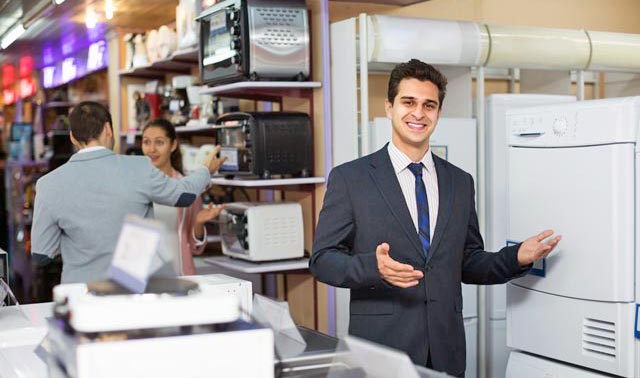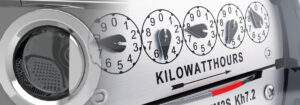A comprehensive guide to choosing the best energy-efficient heater for your home
When it comes to energy-efficient space heaters, several options are available, each with its own set of features and advantages. Here are some types of energy-efficient room heaters:
Ceramic Heaters
Ceramic heaters are known for their quick heating ability and energy efficiency. They use ceramic heating elements and a fan to distribute warm air. They are often more energy-efficient than traditional radiant heaters. On average, ceramic heaters use 500 to 1,500 watts of electricity.
The ceramic element is self-regulating, meaning it adjusts its electrical resistance based on the temperature, promoting safety and energy savings. Ceramic heaters are generally designed for small to medium-sized rooms and may not be efficient for heating larger spaces. They are generally energy-efficient, converting a high percentage of electrical energy into heat.
Modern ceramic heaters come with various safety features, such as overheat protection and tip-over switches. Overheat protection automatically shuts off the heater if it reaches an unsafe temperature, while the tip-over switch turns off the unit if it is accidentally knocked over.
Common problems with ceramic heaters include overheating, thermostat issues, fan problems, and inadequate heating. Dust can accumulate on the ceramic heating element over time, leading to odours when the heater is first used after a period of inactivity. Regular cleaning of the heater’s filter and exterior is recommended to maintain optimal performance.
In summary, ceramic heaters are efficient, portable, and cost-effective solutions for personal heating in smaller spaces. The self-regulating nature of PTC elements contributes to energy savings by reducing power consumption as the desired temperature is reached.
Radiant Panel Heaters
Radiant panel heaters work by emitting infrared radiation, which heats up objects and surfaces in the room. This type of heat is similar to the warmth you feel from the sun.
Radiant panels usually have a quick heat-up time, allowing you to feel warmth almost immediately after being turned on. Based on their power consumption, radiant panel heaters range from 500 to 2,000 watts.
Radiant panel heaters operate silently because they do not use a fan to distribute heat. This makes them suitable for use in bedrooms, offices, or other quiet environments. They are often slim and can be mounted on walls, saving floor space.
In summary, radiant panels are effective for zonal heating, allowing you to target specific areas or rooms in your home. This can be more energy-efficient than heating an entire space.
Oil-Filled Radiator Heaters
These heaters use electricity to heat oil sealed within the unit. The oil retains heat and continues to radiate warmth even after the appliance is turned off, making them energy-efficient. The power outputs range from 500 to 3,500 watts.
Oil-filled radiators operate silently. Unlike some fan-based heaters, they don’t have a fan that generates noise while distributing heat. This makes them suitable for use in quiet environments, such as bedrooms.
The design of oil-filled radiators promotes even heat distribution throughout the room. The natural convection process allows warm air to rise, creating gentle and consistent warmth.
Many models come with wheels or casters, making them easy to move from one room to another. This portability allows for targeted heating where it’s needed most.
In summary, oil-filled radiator heaters provide efficient and comfortable heating with long-lasting heat retention. While they have some limitations, such as slower heat-up times and weight, they are well-suited for personal heating and smaller to medium-sized spaces.
Convection Heaters with Fans
Convection heaters work by heating the air in the unit and then allowing the warm air to rise, creating a natural circulation of heat in the room. Convection heaters with fans, also known as fan-forced convection heaters, are a type of space heater that combines convection heating with the use of a fan to distribute heat more evenly throughout the room.
These heaters are versatile and suitable for various settings, including homes, offices, and other indoor spaces.
Convection heaters, like many electrical heaters, are available in various wattages. While 2,000 watts is a common power rating for some convection heaters, it’s essential to note that their power output can vary. Some convection heaters may have lower or higher wattages depending on the model.
While convection heaters may have higher power output, the energy efficiency of a heater also depends on factors such as the technology used (e.g., fan-forced convection) and the presence of energy-saving features like thermostats and timers.
In summary, convection heaters with fans offer quick heat-up times and more even heat distribution compared to traditional convection heaters. They are versatile and suitable for larger spaces but may produce some noise.
How do I choose an efficient space heater?
When choosing an energy-efficient space heater, consider factors such as the size of the space you want to heat, safety features, and the heater’s energy efficiency rating. Look for products with certifications such as the Energy Star label, which indicates that the heater meets specific energy efficiency criteria. Choosing an Energy Star-certified heater can be an assurance of higher energy efficiency.
Look for heaters with energy-saving features such as adjustable thermostats, programmable timers, and eco-friendly modes. These features help optimize the heater’s operation and reduce energy consumption when full heating capacity is not required.
Choose a heater with an appropriate heating capacity for the room size. Oversized heaters may lead to unnecessary energy consumption, while undersized heaters may struggle to provide sufficient warmth. Additionally, always follow safety guidelines and recommendations provided by the manufacturer to ensure proper usage and prevent accidents.



